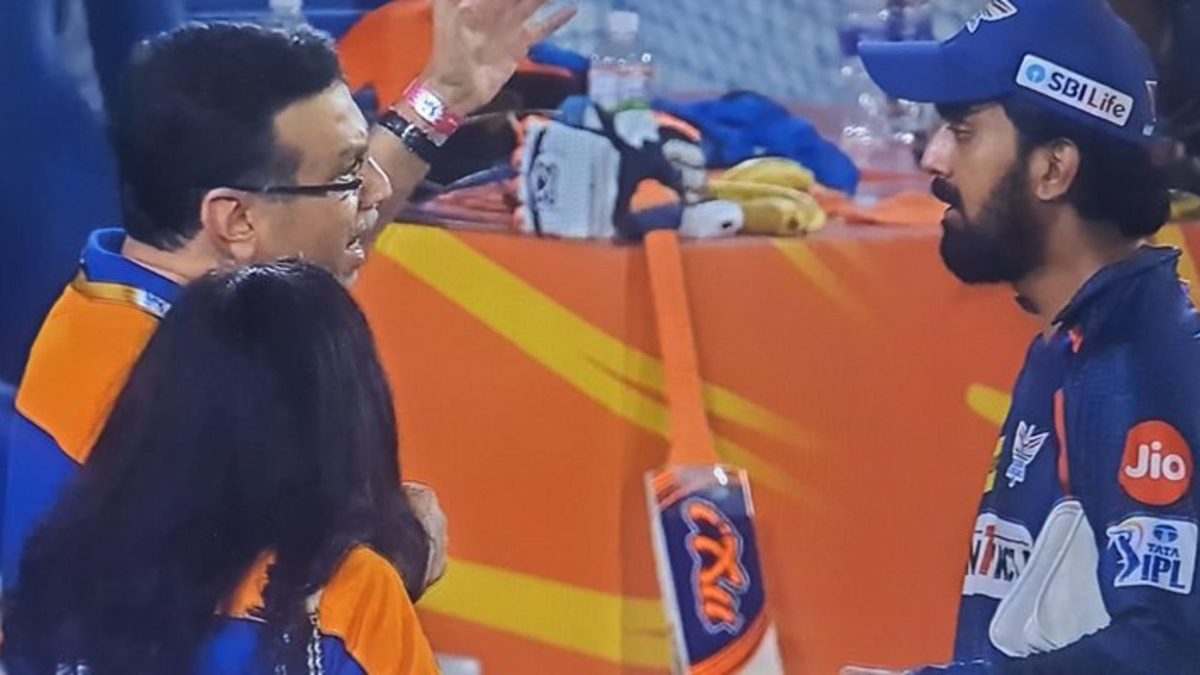
The IPL authorities need to put systems in place to prevent the cricketers from being mistreated by the franchise owners, writes Abhishek Mukherjee.
Subscribe to the Wisden Cricket YouTube channel for post-match analysis, player interviews, and much more.
Sunrisers Hyderabad broke a plethora of records as they romped to a ridiculously easy win in their home game against Lucknow Super Giants on May 8. A video of LSG owner Sanjiv Goenka chatting animatedly with captain KL Rahul surfaced not long after the game was over.
While the exact words used are not known, it was probably not an amicable conversation: Goenka was visibly frustrated after his team’s performance, despite the fact that the onslaught from the SRH openers would have floored most bowling attacks. To his credit, Rahul remained calm throughout the exchange.
The video became viral on social media. The responses were largely in favour of Rahul. The general sentiment was not about Goenka’s tirade but the lack of Rahul’s privacy; many believed that the incident should have taken place behind closed doors.
This was not the first time a team owner’s criticism of a cricketer became public. In 2008, Royal Challenger Bangalore (now Bengaluru) owner Vijay Mallya sacked CEO Charu Sharma, then publicly criticised captain Rahul Dravid for the latter’s performance at the auction.
“Mallya used to sit in the meetings and had a veto on what could be done,” former RCB player Murali Kartik later told the authors of Cricket 2.0. “In the IPL the owners believe that they know cricket. It doesn’t happen that way. It has to be left to the professionals. Just because you are owned by a big businessman or a film star they don’t know cricket.”
The same season, reports of a rift between Kolkata Knight Riders owner Shah Rukh Khan and captain Sourav Ganguly did the rounds. In his autobiography, Ganguly dedicated an entire chapter to his relations with Shah Rukh. “I … more than once took his opinion while deciding upon the final XI – something I had never done while picking an Indian eleven,” he recalled.
A verbal spat between Kings XI Punjab (now Punjab Kings) owner Preity Zinta and coach Sanjay Bangar was widely reported in 2016 – the reports even claimed Zinta had threatened to sack Bangar – only for both parties to deny it.
Goenka himself came onto the radar in 2017 when the now-defunct Rising Pune Supergiants – another franchise he owned – replaced MS Dhoni as captain with Steve Smith. While sacking an IPL captain is not uncommon, what caught the eye of many was a tweet by Sanjiv’s brother Harsh Goenka, claiming Smith’s superiority over Dhoni as a captain. Harsh Goenka subsequently deleted the tweet.
There are myriad such instances, some based on one-sided versions.
The debate around the ideal relationship between the organisation and the employee is perhaps as old as employment itself. While there is little doubt that the team owner is entitled to criticise the cricketer, it is important that these interactions do not take place in public.
That brings us to the question of a cricketer’s options under these circumstances, particularly in the case of mid-season player-franchise rifts. Parting ways mid-season may be an option for the big stars, but it is not a viable option for the lesser-known cricketers.
At this point, there is little option for the cricketer but to wait until the the triennial mega auction. Once every three years, however, the decision to be retained lies as much with the cricketer as it does with the owner.
Former KKR team director Joy Bhattacharjya recommended an “opt out card” for the cricketers. He suggested that the cricketer should have “the right to say no to one franchise” at the auction. That way, a player can have the right to prevent up to one franchise from bidding for him ahead of the auction. Bhattacharjya also wants this information to be available to only the BCCI and that particular franchise.
However, three years are a long span of time – and these incidents can take place in the first season of a cricketer’s stint. To prevent this, the IPL committee can consider granting a player the right to leave a franchise after one season, and barring the franchise from re-acquiring him at next season’s auction. This will be different from the mutually agreed pre-season transactions, like Hardik Pandya’s and Cameron Green’s ahead of the 2024 IPL.
Of course, this needs to come with a clause. A cricketer should be allowed to leave a franchise after one season (or two seasons) if and only if they can establish to the IPL committee that they have been mistreated by a franchise. If that restriction is not there, they may simply seek a better deal from a rival team. Ravindra Jadeja attempted exactly that – he tried to move from Rajasthan Royals to Mumbai Indians – and was banned for the 2010 season. Without restrictions, such transfers will be rampant, and will beat the purpose of the auction.
In India, cricketers are often praised as demigods, and enjoy a popularity matched only by movie stars. However, in this particular case, they are employees – and should be entitled to rights to leave an organisation they are not comfortable at. Cricket has, after all, left its amateur days behind long ago, at least in India.








